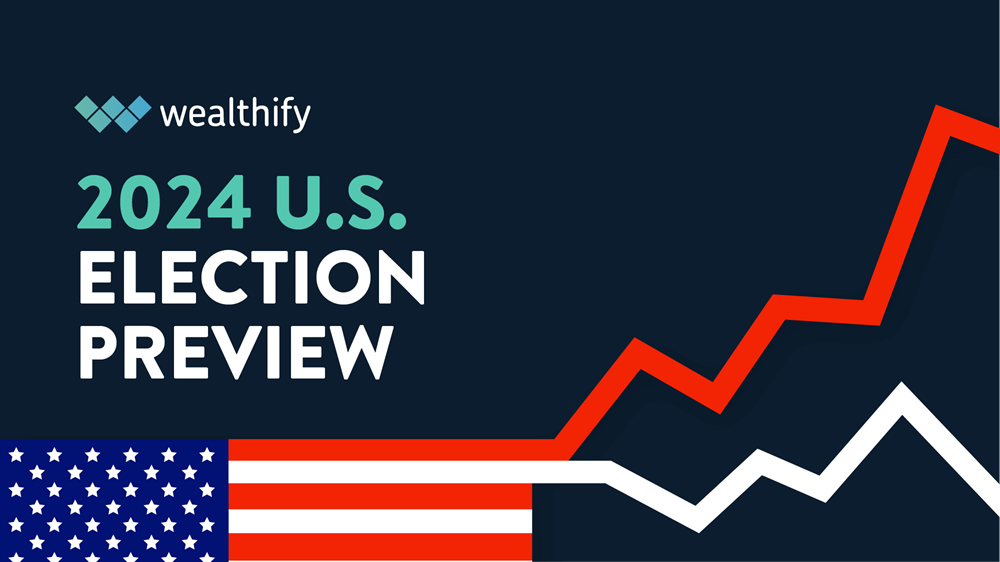The U.S. presidential race is proving to be close, with Kamala Harris maintaining a narrow lead in national polls over Donald Trump.
In the lead up to election day on November 5th, however, Trump has been gaining ground in swing states [1], where voting patterns often shift between parties — and play a decisive role in the election outcome.
With both candidates outlining distinct economic plans, the potential impact on investments and economic conditions remains here at Wealthify.
Trump vs Harris on economic policy
Harris’s approach is rooted in a higher corporate tax rate, expanded tax credits for families, and increased support for affordable housing and renewable energy. Her plan is to fund these initiatives through taxes on higher earners and corporations.
Harris is also looking to address healthcare costs (with policies to limit medical prescription prices), increase the minimum wage, and support first-time homebuyers.
In contrast, Trump’s gameplan is to extend income tax cuts from the 2017 Tax Cuts and Jobs Act, with a further corporate tax rate reduction, from 21% to 15% [2]. His approach also includes eliminating taxes on Social Security benefits and tips.
With the aim of lowering “the cost of doing business”, he wants to make the US an attractive hub for corporate investment, while reversing trade imbalances through higher tariffs — especially on China.
Deficit and Debt Considerations
Both candidates' policies are set to increase the fiscal deficit (the difference between the government’s spending and income during a certain period).
According to the non-partisan Committee for a Responsible Federal Budget [3], Harris’ plans could add around $3.5 trillion to the national debt over a decade, while Trump's policies may result in an increase in debt of between $7.5 trillion and $12.5 trillion.
This expansion of debt levels would raise the deficit further, despite a strong economic environment with low unemployment and steady growth.
Servicing this debt has now surpassed the United States annual defence spend — a sign that this fiscal imbalance could strain long-term financial stability, which may lead to future interventions by the Federal Reserve.
Implications for Investment Plans
History shows that the impact of politics on markets tends to be muted in the short-term.
However, the extent to which policies affect demographic trends, innovation, government debt, and international relations, can have a more significant influence in the long-term direction of an economy.
If you’re a Wealthify customer, your investment Plan is invested in diversified, global assets, balancing multiple investment types to manage economic shocks — and political ones You can learn more about our investment approach on our how we invest page.
With investing your capital is at risk, so the value of your investments can go down as well as up, which means you could get back less than you initially invested.
Wealthify does not provide financial advice. Seek financial advice if you’re unsure about investing.
The tax treatment depends on your individual circumstances and may be subject to change in future.
References:



